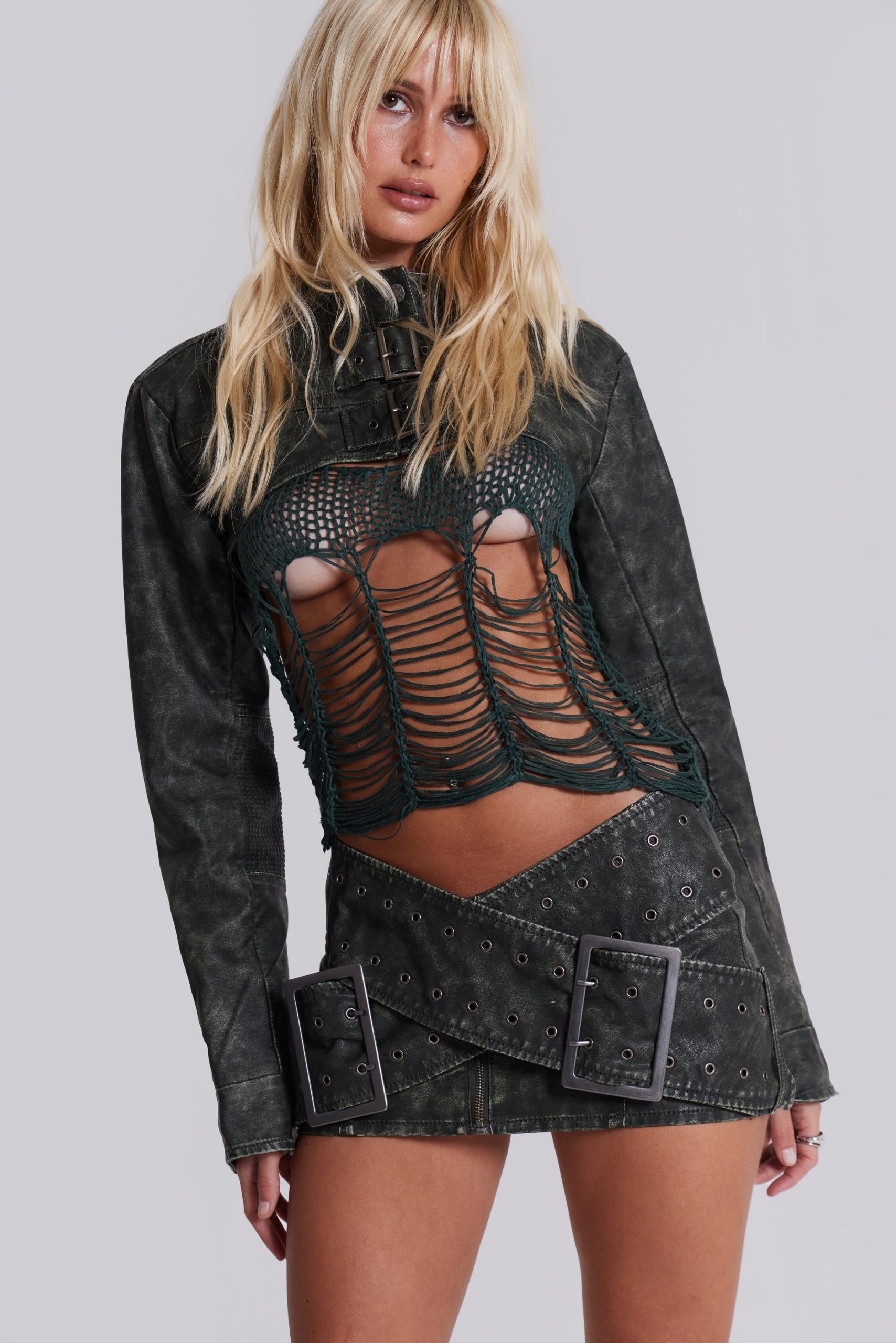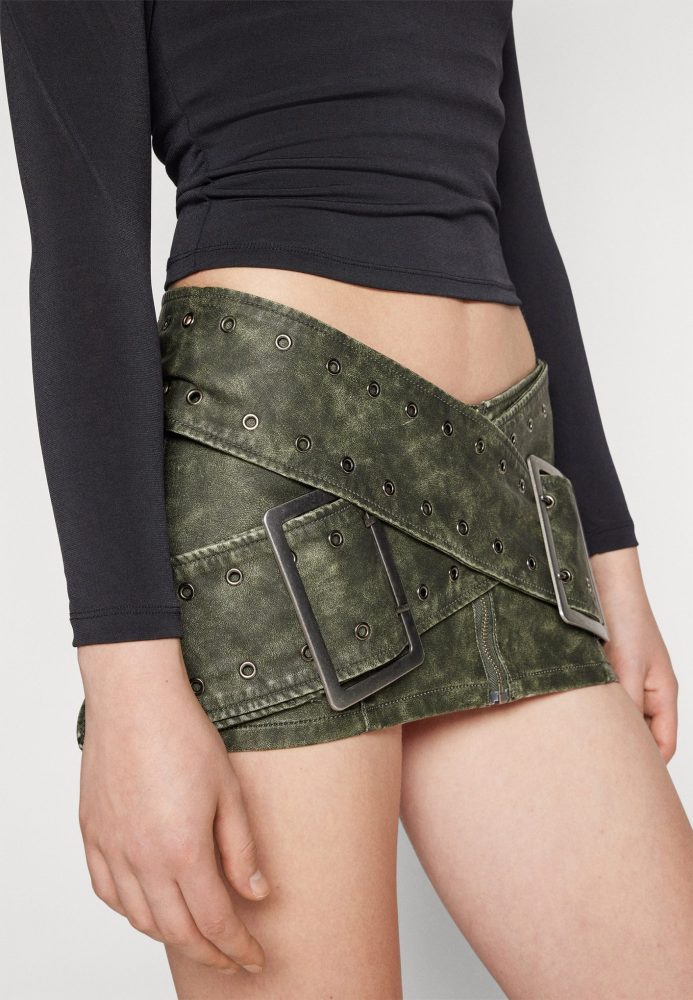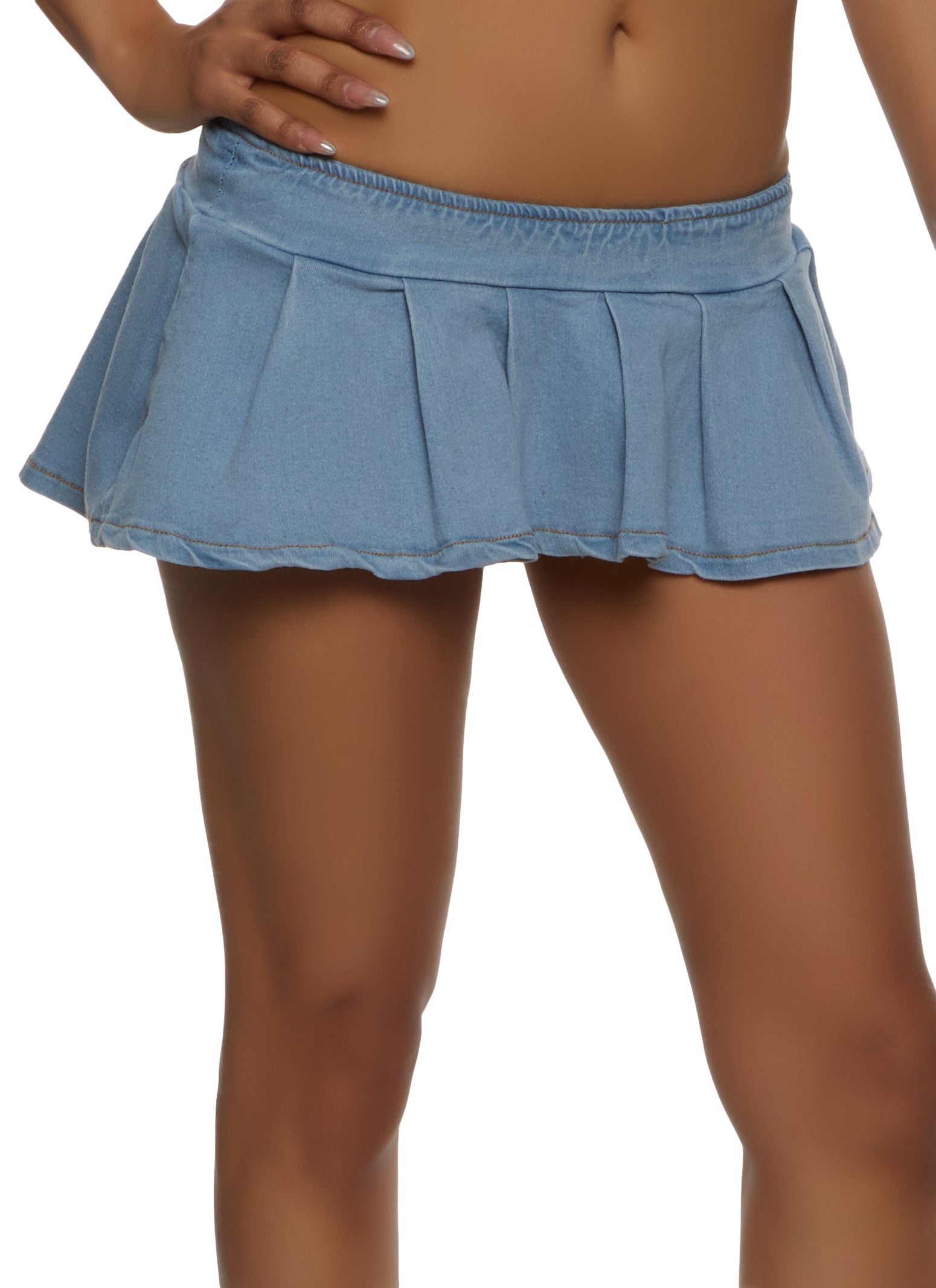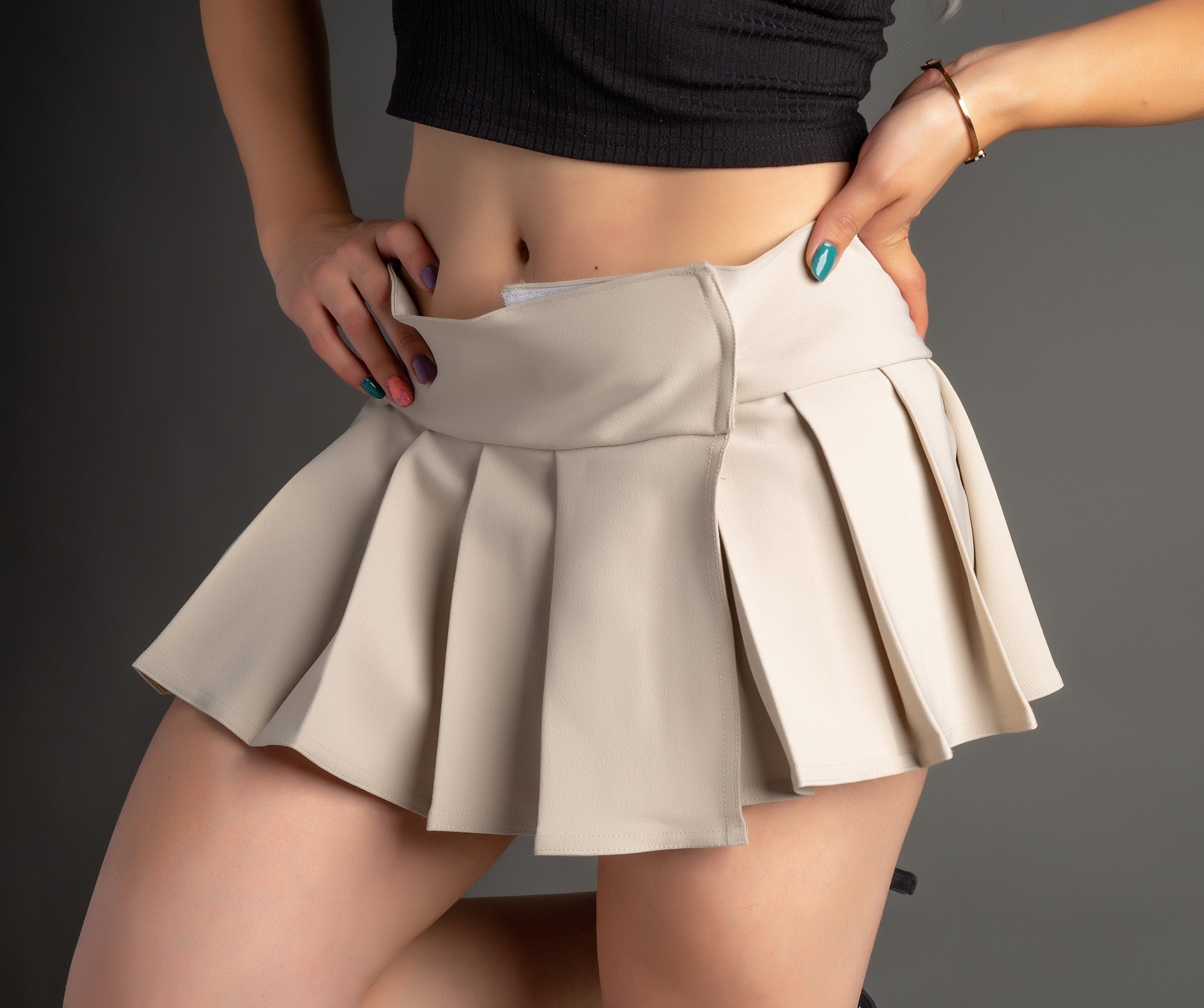Introduction
Ultra mini skirt (ultra mini-jupe) – delves into the fascinating world of a garment that has consistently pushed the boundaries of fashion, societal norms, and gender politics since its explosive entry onto the fashion scene. The ultra-mini skirt, defined by its daringly high hemline, has been more than just a clothing item—it’s a symbol of rebellion, liberation, and evolving attitudes towards femininity and sexuality throughout the decades.

The Birth of a Fashion Phenomenon
Tracing its roots back to the Swinging Sixties, the ultra-mini skirt emerged as a key element of British designer Mary Quant’s revolutionary vision. In London’s mod scene, Quant’s designs embodied the youthful, carefree spirit of the era, with the mini skirt symbolizing a break from the conservative dress codes of the past. By exposing more leg than ever before, it became a liberating statement for young women, aligning with the feminist movements of the time that fought for greater freedom and equality.
Cultural and Social Impact
The adoption of the ultra-mini skirt quickly transcended fashion circles, becoming a global phenomenon that seeped into mainstream culture. It featured prominently in films, music, and television, with icons like Twiggy and Jean Shrimpton popularizing the look worldwide. This tiny garment became synonymous with youth culture, symbolizing a generational shift towards sexual liberation and the rejection of traditional gender roles.
Controversies and Critiques
However, the ultra-mini skirt did not gain universal acceptance without controversy. Critics decried it as indecent, arguing that it objectified women and undermined their dignity. Religious leaders, politicians, and even some feminists condemned the trend, sparking debates about appropriate attire and women’s autonomy over their bodies. Educational institutions and workplaces imposed dress codes banning the mini, further fueling the skirt’s reputation as a symbol of defiance.
Fashion Evolution and Revivals
Despite initial backlash, the ultra-mini skirt has proven to be a resilient and adaptable fashion staple. It experienced numerous revivals throughout subsequent decades, each iteration reflecting the zeitgeist of its time. In the 1980s, the punk and new wave scenes embraced the mini as a symbol of rebellion, while the 1990s saw a return to a more minimalist, pared-down version that aligned with the grunge aesthetic. Each revival brought with it new discussions around body positivity, self-expression, and the ongoing negotiation of what constitutes appropriate dressing.
Gender and Identity
The ultra-mini skirt’s history also intertwines with the evolving conversation around gender identity and expression. As societal norms surrounding gender have become more fluid, the mini skirt has been adopted by individuals across the gender spectrum, challenging traditional notions of masculinity and femininity. It serves as a canvas for exploring and subverting gender roles, highlighting fashion’s potential as a tool for self-definition.
The Mini Skirt Today and Tomorrow
In the contemporary fashion landscape, the ultra-mini skirt continues to hold sway, though its significance has shifted with changing attitudes. With sustainability and inclusivity now at the forefront of fashion discourse, the mini skirt’s future iterations may focus on ethical production and accommodating a broader range of body types. As fashion becomes more global and diverse, the mini skirt stands as a reminder of the power of clothing to reflect and shape cultural narratives,争议, and progress.
Cultural Representations and Media Influence
The ultra-mini skirt’s presence in media and popular culture has played a crucial role in shaping its perception and cultural significance. In film and television, it has often been used to portray characters as confident, rebellious, or sexually liberated. From the mod-inspired looks in Austin Powers to the power dressing of the 1980s in shows like Dynasty, the mini skirt has become a visual shorthand for conveying a character’s attitude or era. Music videos, too, have utilized the mini skirt to emphasize performers’ stage personas, with artists like Madonna and Britney Spears incorporating the garment into their iconic looks, further reinforcing its connection to female empowerment and sexuality.
The Intersection of Fashion and Feminism
The relationship between the ultra-mini skirt and feminism has been complex and multifaceted. While some argue that the mini skirt represents a reclaiming of female sexuality and a rejection of patriarchal modesty standards, others critique its association with objectification and the male gaze. The debate reflects the broader tensions within feminist thought regarding individual choice, bodily autonomy, and the role of fashion in constructing gender identities. As feminist discourse has evolved to encompass intersectionality and recognize diverse experiences, so too has the interpretation of the mini skirt as a feminist symbol, acknowledging that what may be empowering for one woman may not be for another.
The Mini Skirt as a Global Phenomenon
Beyond its Western origins, the ultra-mini skirt has also had a global impact, adapting to and influencing local fashion cultures around the world. In different regions, the mini skirt has been adopted, adapted, or resisted based on cultural values, religious beliefs, and local aesthetics. Its reception has sparked debates about cultural appropriation versus appreciation, as global fashion trends intersect with indigenous styles. This cross-cultural exchange highlights the mini skirt’s adaptability as a fashion symbol and underscores the global interconnectedness of fashion trends.
Sustainability and Ethical Considerations
As consumer awareness of environmental and ethical issues grows, the production and consumption of ultra-mini skirts, like all fashion items, face increased scrutiny. Sustainable fashion advocates call for the use of eco-friendly materials, fair labor practices, and reduced waste in the production of mini skirts and other garments. This movement encourages a shift towards more conscious consumption patterns, where buyers consider the lifecycle of their clothes, including their environmental footprint and the conditions under which they were made. In response, some fashion houses are incorporating sustainable materials and transparent supply chains, offering eco-conscious alternatives to the traditional mini skirt.
The Future of the Ultra-Mini Skirt
Looking ahead, the future of the ultra-mini skirt will likely be shaped by ongoing societal shifts, technological advancements, and changing consumer preferences. As fashion continues to embrace inclusivity and diversity, we may see more size-inclusive and adaptive mini skirt designs that cater to a broader range of bodies and abilities. Technological innovations could lead to smart mini skirts integrating wearable technology, blending fashion and function in exciting new ways. Ultimately, the ultra-mini skirt’s evolution will continue to mirror our cultural values, societal debates, and the ever-evolving quest for self-expression through fashion.
In conclusion
The ultra-mini skirt is much more than a fleeting trend; it’s a microcosm of societal change, reflecting and influencing cultural attitudes towards femininity, sexuality, and personal freedom. Its enduring legacy underscores fashion’s ability to spark controversy, inspire creativity, and ultimately, to revolutionize the way we perceive and express ourselves.




